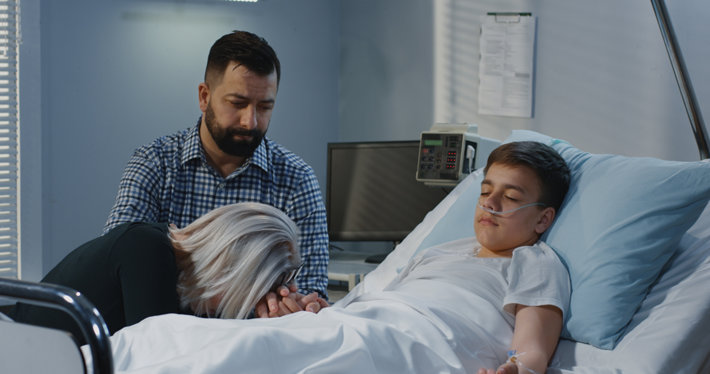Where Medical Marijuana is Advertised, Youth Consumption Increases

While marijuana remains a hotly contested issue across the nation, most parents would agree that they do not want their adolescent children to use marijuana. To that point, a 2019 study published in the journal Drug and Alcohol Dependence found that the more often young people were exposed to medical marijuana advertising, the more likely they were to experiment with cannabis.
There is no guarantee that advertisements are harmless. To protect young people from being exposed to cannabis, parents and communities should come together to demand that medical marijuana companies not advertise their products to the general public.
Why the U.S. Should Cut Back on Medical Marijuana Advertising
California became the first state to pass comprehensive medical marijuana laws in 1996. As of 2021, 36 states have legalized cannabis for medicinal purposes, and 18 states have legalized it for recreational purposes.
“Higher average exposure to MM [medical marijuana] advertising was associated with higher average use, intentions to use, positive expectancies, and negative consequences.”
As marijuana legalization advances, medical marijuana manufacturers, distributors, and retailers can freely advertise their products on various media channels. Unfortunately, much like alcohol and tobacco advertising, this is harming young people. Quoting study authors D’Amico, Rodriguez, Tucker, Pedersen, and Shih: “Higher average exposure to MM [medical marijuana] advertising was associated with higher average use, intentions to use, positive expectancies, and negative consequences. Similarly, higher rates of change in MM advertising exposure were associated with higher rates of change in use, intentions, expectancies, and consequences over seven years.” The link between medical marijuana advertising and adolescents is concerning.

The researchers went on to point out that medical marijuana advertising likely not only plays a significant role in placing a positive view of marijuana into the minds of young people, but such advertising is likely culpable in negative marijuana-related consequences among youths. Quoting the authors, “Results suggest that exposure to MM advertising may not only play a significant role in shaping attitudes about marijuana, but may also contribute to increased marijuana use and related negative consequences throughout adolescence. This highlights the importance of considering regulations for marijuana advertising, similar to regulations in place for the promotion of tobacco and alcohol in the U.S.”
Given the risk factors outlined above, one could make a compelling argument for why medical marijuana advertising in the U.S. should receive the same (if not more strict) regulations that tobacco does. Only a few countries in the world allow such broad and unfettered advertising of medicinal products to its residents, and the U.S. is one of them. In the case of medicinal marijuana, advertising undoubtedly causes more harm than good.
Regions where medical marijuana is advertised experience higher rates of adolescent cannabis use. With that in mind, policymakers, legislators, and residents should take this as a cue that medical marijuana should be a matter discussed between a patient and his or her doctor, not an issue promoted on roadside billboards and across local media channels.
Young People Put Themselves in Harm’s Way When They Experiment with Cannabis

According to the National Institute on Drug Abuse, marijuana use is widespread among adolescents and young adults. As of 2019, marijuana use among 8th, 9th, 10th, 11th, and 12th graders is the highest it’s been since the early-1990s. About 11.8% of 8th graders report using marijuana, 18.8% of 10th graders report marijuana use, and 35.7% of 12th graders report experimenting with marijuana. More than 11.8 million young people report using marijuana.
Also according to NIDA, medical emergencies related to marijuana have increased. Each year, there are approximately 450,000 to 500,000 ER visits related to cannabis use. About 13% of these cases involve an adolescent between the ages of 12 and 17.
The Importance of Parents Talking to Their Kids About Marijuana
Even if the U.S. took action to cut down on medical marijuana advertising, some youths would still hear about cannabis from their peers. Some adolescents would still become intrigued by marijuana and want to experiment with it. That’s why it is of the utmost importance that parents talk to their kids about marijuana.
Parents need to discuss the harmful effects of cannabis with their sons and daughters. Doing so has a marked effect on whether or not their children will experiment with cannabis. Even if a young person has seen medical marijuana advertising and becomes interested in cannabis as a result, their interest can still be turned away by their parents having conversations with them about the harmful effects of marijuana.
Mothers and fathers of adolescent children should discuss the following:
- Marijuana use can lead to a decline in school performance;
- Using marijuana can increase one’s risk for mental health issues;
- Marijuana use often leads to impaired driving, which can be deadly;
- One in six teens who use marijuana repeatedly become addicted to it;
- Frequent, long-term marijuana use has been linked to school dropout and lower educational attainment;
- Marijuana use in young people can permanently impair brain development;
- Using marijuana can lead to difficulties in thinking, problem-solving, learning, retaining memories, and maintaining attention.
Another factor to consider is that, given the fact that the marijuana of today is far more potent than it used to be, the harmful effects of marijuana are likely to be amplified above and beyond what young people might think. According to NIDA, “In the early 1990s, the average THC content in marijuana was less than 4 percent. It is now about 15 percent and much higher in some products such as oils and other extracts. These resins [extracts] have 3 to 5 times more THC than the plant itself. Smoking or vaping it (also called dabbing) can deliver dangerous amounts of THC and has led some people to seek treatment in the emergency room.”
Taking a Stand Against Cannabis Advertising
As a final note, the study authors who discovered the connection between medical marijuana advertising and youth experimentation with marijuana concluded their research with a warning to parents. Quoting Elizabeth D’Amico, the study’s lead author and a senior behavioral scientist at RAND: “Our findings suggest that increased exposure to medical marijuana advertising is associated with increased marijuana use and related negative consequences throughout adolescence. As more states legalize marijuana for medical or recreational uses, we must think carefully about the best ways to regulate marijuana advertising so that we can decrease the chances of harm occurring, particularly for adolescents. This work highlights the importance of considering regulations for marijuana advertising that would be similar to rules already in place to curb the promotion of tobacco and alcohol across the United States.”
Dr. D’Amico is right. The fact that young people who are exposed to medical marijuana advertising are more likely to experiment with cannabis is concerning. American families, communities, policymakers, legislators, and public health officials need to reassess the real harms and risks of cannabis advertising.
For the interests of public health and the safe, healthy future of young people, cannabis advertising should be heavily regulated and all but eliminated, much like tobacco advertising was.
Sources:
- https://www.ncbi.nlm.nih.gov/pmc/articles/PMC6744951/
- https://www.drugabuse.gov/publications/research-reports/marijuana/what-scope-marijuana-use-in-united-states
- https://www.cdc.gov/marijuana/factsheets/teens.htm
- https://teens.drugabuse.gov/drug-facts/marijuana
- https://www.eurekalert.org/pub_releases/2018-05/rc-vmm051018.php
Reviewed by Matt Hawk, BS, CADC-II, ICADC


 ®
®